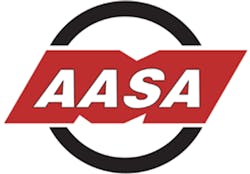The potential danger posed by uninspected vehicles increases as consumers hold onto vehicles longer and delay required maintenance at higher rates, according to Ann Wilson, MEMA senior vice president, government affairs. “Nationally, the average age of passenger cars and light trucks combined is 11 years, according to data from Polk, and it has been rising steadily for the past 15 years,” Wilson explains. “AASA estimates $62 billion worth of vehicle maintenance was unperformed or underperformed in 2010, an amount which has also been increasing. Given these trends, the highway safety benefits of state inspection programs will continue to grow in the coming years,” she concludes.
In the associations’ comments, AASA and MEMA also urged NHTSA to update the Vehicle In Use Inspection Standards for vehicles with a gross vehicle weight rating of 10,000 pounds or less. These standards currently focus on brake systems, steering systems, suspension systems, tires, and wheel assemblies.
“A review of these standards should update the existing recommendations based on current vehicle technology as well as recent science, and should expand the list of systems to include additional vehicle systems and components, adding new vehicle technologies,” Handschuh adds. “Expanding and updating the inspection standards would ensure that state programs are continuing to focus on critical safety parts and systems.”
AASA and MEMA are recommending the addition of lighting, mirrors, windshields and other glass, seat belts, air bags, dashboard warning lights for operation of anti-lock brake systems and electronic stability control systems, doors, fuel systems and exhaust systems to safety inspection programs.
The full comments submitted by AASA and MEMA to NHTSA are available by clicking here.
About AASA
AASA (www.aftermarketsuppliers.org) exclusively serves manufacturers of aftermarket components, tools and equipment, and related products. It is a recognized industry change agent – promoting a collaborative industry environment, providing a forum to address issues and serving as a valued resource for members. AASA is an affiliate of the Motor & Equipment Manufacturers Association (MEMA). “AASA, The Voice for the Automotive Aftermarket Supplier Industry”
About MEMA
Suppliers manufacture the parts and technology used in domestic production of new cars and trucks produced each year, and the aftermarket products necessary to repair and maintain more than 248 million vehicles on the road today.
MEMA supports its members through its four affiliate associations, Automotive Aftermarket Suppliers Association (AASA), Heavy Duty Manufacturers Association (HDMA), Motor & Equipment Remanufacturers Association (MERA) and Original Equipment Suppliers Association (OESA). MEMA represents more than 700 member companies with global motor vehicle parts sales exceeding $600 billion and 65 percent of North American automotive supplier sales. For more information on the motor vehicle parts supplier industry, visit www.mema.org.
In official comments submitted to the National Highway Traffic Safety Administration (NHTSA) on July 20, the Automotive Aftermarket Suppliers Association (AASA) and the Motor & Equipment Manufacturers Association (MEMA) expressed support for state inspection programs and concern regarding the agency’s proposal to strike its recommendation of annual automotive safety inspections as part of its amendments to the Highway Safety Program Guidelines for states.
“AASA and MEMA support keeping the recommendation to inspect vehicles annually, which will ensure that critical safety components are maintained at the highest level based on federal guidelines while also instilling public confidence in state inspection programs and, more effectively, removing unsafe or defective components from vehicles on our roadways,” says Steve Handschuh, president and COO of AASA. “The retention and expansion of the use of regular vehicle inspections is a AASA/MEMA priority,” he adds.
“A routine regular motor vehicle safety inspection can and does save lives each year by ensuring that critical safety equipment on vehicles is functioning properly and is free of defects,” Handschuh says. “These inspections uncover mechanical defects which, if left uncorrected, could cause or contribute to the cause of a traffic crash.”
The comments by AASA and MEMA cited the findings of recent studies conducted by the Pennsylvania Department of Transportation and the Missouri State Highway Patrol as demonstrating the effectiveness of strong annual state inspection programs:
“The findings in the Pennsylvania study estimate that the state will have between 115 and 169 fewer fatal crashes each year due to the state’s annual inspection program. This corresponds to between 127 and 187 fewer fatalities annually. The study went on to estimate that fatal accidents are 13 percent higher in states without vehicle safety inspection programs than in states with such programs.
“The Missouri study reached a similar conclusion in comparing nationwide crash causation to state crash causation. The Missouri data demonstrated that crashes with a vehicle defect causation factor were lower in the state compared to the nation. In the state of Missouri, a defect was a causation factor in one out of every 131.2 fatal crashes. Compared to crashes in Missouri, over the same period, a vehicle defect was a causation factor in one out of every 79.7 fatal crashes nationwide.”


